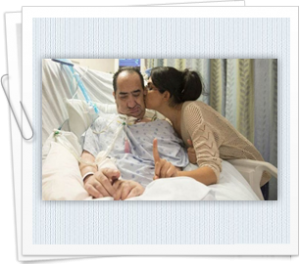Online CPR Certification Blog
End of life decision making and persistent vegetative state covered by the media
Date: February 26th, 2014
 Examination of Schiavo’s neurological condition
Examination of Schiavo’s neurological condition
The popular ‘Schiavo Case’ was discussed widely from ethical, medical and social standpoints, not just in US but all over the world. In an article that is yet to be published, a team of experts examined how the media covered this famous case. This study reviewed several American daily newspapers which were highly prolific regarding the story: the Washington Post, the New York Times, St. Petersburg Times and the Tampa Tribune. They analyzed more than 400 letters sent to the editor and 1 141 articles. The media had never before covered any clinical case so extensively. The nature and accuracy of statements made regarding the neurological condition of Terri Schiavo, her behavioral repertoire, her behaviors, and her prognosis and treatment withdrawal were examined.
Dr. Racine lamented that during the research, they were greatly surprised by amount and nature of medical inaccuracies published by these newspapers. There were even some journalists who wrote that Schiavo even reacted to specific expressions or words, supposedly to show that she was still conscious. The legal, ethical and political dimensions of this case made the headlines more than medical and scientific information. It is only 1 percent of the total articles examined that defined ‘persistent vegetative state’ in the right way which is of course a very essential concept when it comes to understanding the various issues at stake. Basically, persistent vegetative state refers to a neurological condition that is characterized by very severe lesions up to the cerebral cortex that eliminates higher functions including absence of memory, inability to communicate and absence of pain among others.
Was the media misinforming the public?
Contrally to what most people think, the brain stem that is responsible for these functions is however not damaged and this explains the reflexes of patients and their ability to swallow and breathe independently. Even though the medical condition that Terri Schiavo was suffering from had no any hopes for recovery about 21 percent of the articles wrote that their chances that her condition could improve. Eric explains that their observations showed that the press majorly capitalized on this controversy to a great extent. For them, selling more copies was more important than providing the readers with scientific information. The media coverage on this case sustained false hopes and myths.
The Neurology article is a measure of misinformation and underlined the fact that information that the media could access had limitations. According to public debate regarding the case, the ethical, legal and medical consequences on whether withdrawal of the treatment was legitimate according to the will of the patient were highly challenged. The originality of the case was explained by the fact that it reveals the increasing trend of pro life social stream that has reached Canada now.
